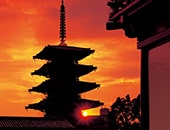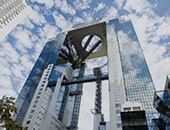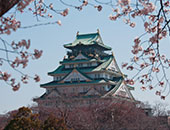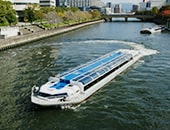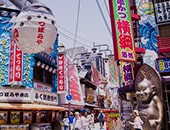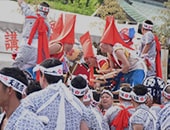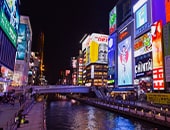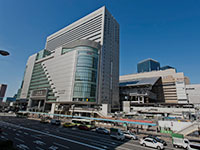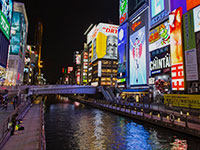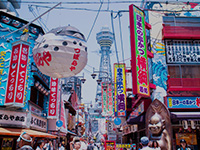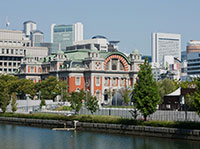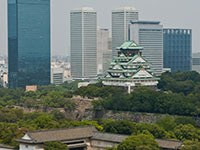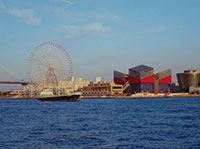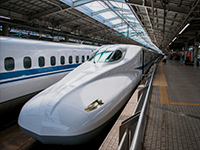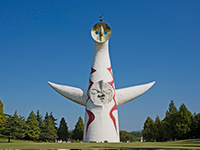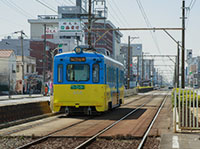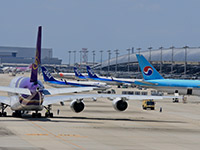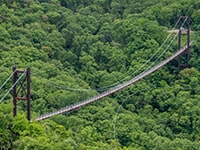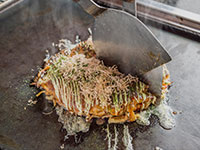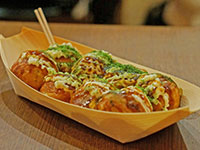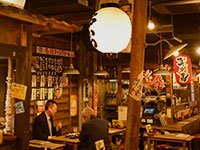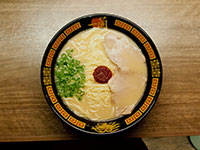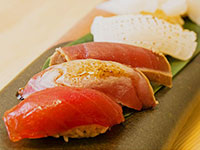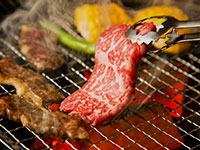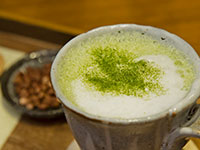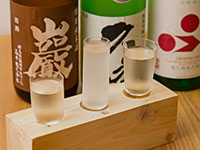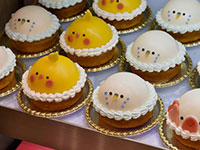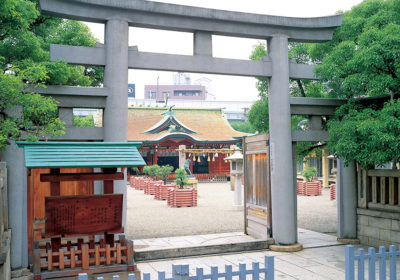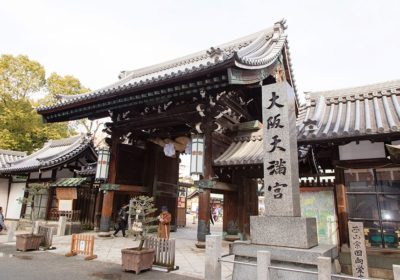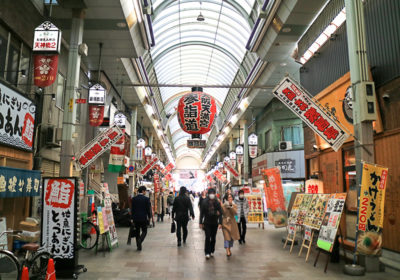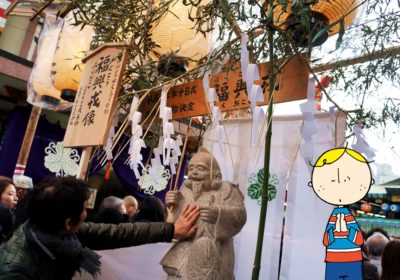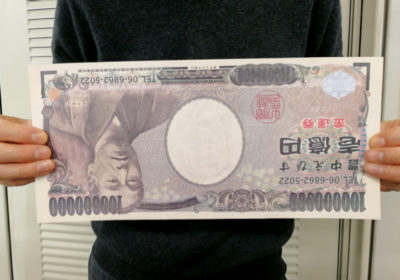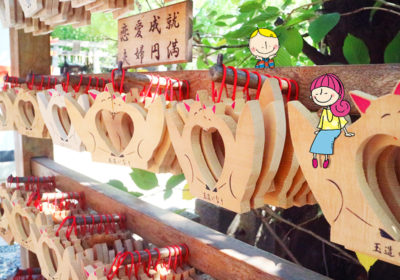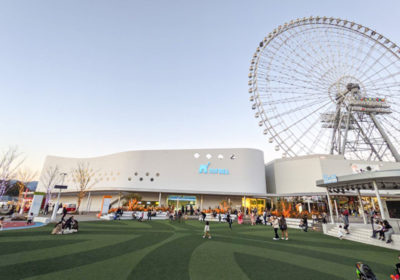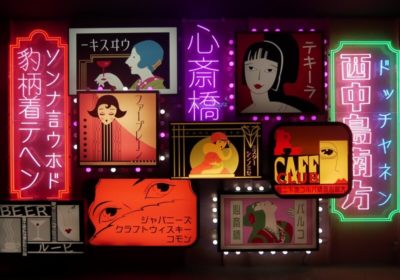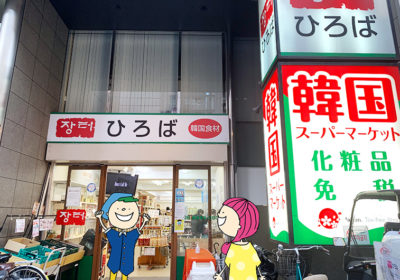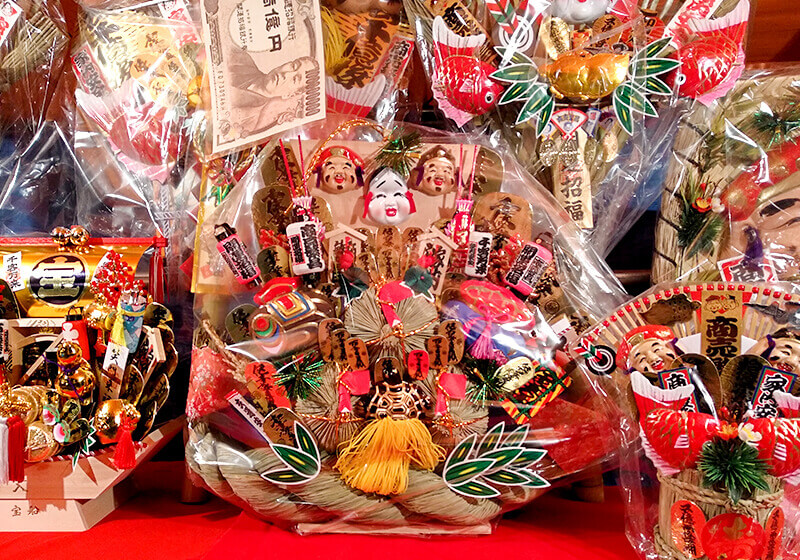

Supporter
Start the new year right!
Osaka’s most beloved festival—Tōka Ebisu
Osaka has a reputation for being a big business town, often billed as Japan’s second city, it is a huge force in the Japanese economy. It kind of goes without saying that the Tōka Ebisu Festival in Osaka is a big deal. So what is all the buzz about? Let’s take a look.
[Contents]
■When is Tōka Ebisu?
It’s all in the name—Tōka literally means the tenth day of the month. Held during January in Kansai, this is the first big celebration after New Year’s. Some people actually wait until the Ebisu festival to get their omikuji (new year fortunes) from the shrine.

▲ Crowds gathering on Imamiya Ebisu Shrine grounds
Tōka Ebisu is celebrated for three days:
Jan. 9 (yoi-ebisu) Pre-ebisu, this day is for planners. Get ahead of the crowd and get your good fortune early.
Jan. 10 (hon-ebisu) Main ebisu, this is the real deal. Although the festival is perfectly enjoyable on the other days, this is technically the main day for festivities.
Jan. 11 (nokori-ebisu) Remaining luck. You get an extra day to make it down to the shrine and pray for prosperity in the new year.
■What is Tōka Ebisu? History and tradition
Ebisu is one of the group of deities known as the 7 Lucky Gods (shichifukunin) and is depicted as a round figure with a smiling face and large ears. Even with those big droopy ears he is believed to be hard of hearing. He is the god of prosperity, which has at certain times and regions has meant he is also affiliated with agriculture and the seas. Ebisu is also an amazing fisherman! You’ll often see him holding a fishing pole and is usually accompanied by a large sea bream, which is considered a good-luck fish because of its name—–tai. Tai is also the suffix in the word omedetai, indicating something special or happy.
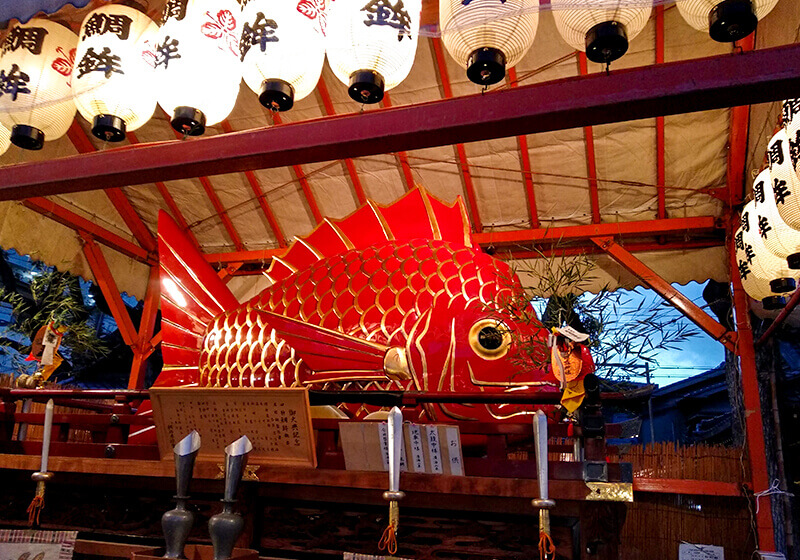
▲Ebisu’s red and gold sea bream surrounded by lanterns and bamboo during the celebrations
Tōka Ebisu is a celebration of Ebisu, and the festival itself is believed to bring prosperity and good fortune in business to those who attend. The festival is colloquially known as Ebessan and has been an ongoing annual festival for centuries at Ebisu shrines, especially in the Kansai region.
Fukusasa are lucky bamboo branches that are either given out or purchased by festival-goers, depending on which shrine you visit. Usually there is a tag attached to the branch stating the shrine’s name and you can purchase additional charms each with symbolic meaning—Ebisu’s smiling face, a red sea bream, bails of rice, bags of money, etc. The more luck you need, the more charms you should attach to your branch.
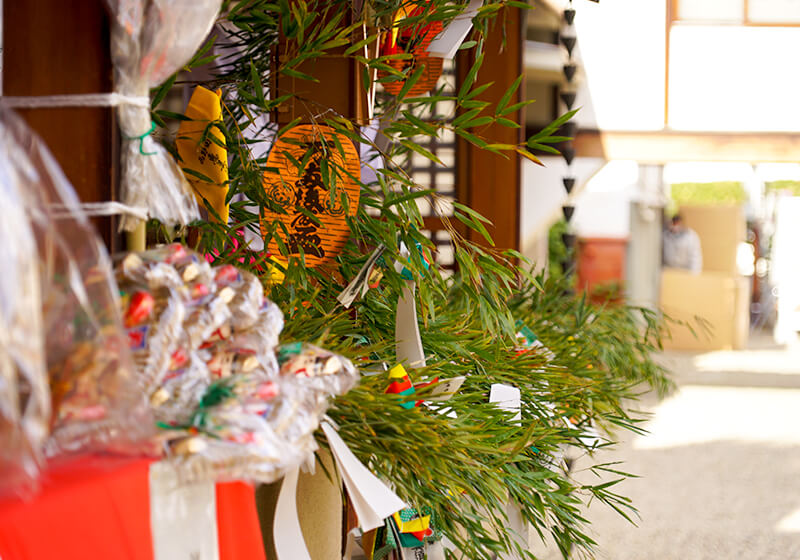
▲Fukusasa and other Tōka Ebisu decorations lined up and ready for sale
Take your fukusasa home and display it in a high place for the whole year. Bring the fukusasa and any other decorations you have from last year’s festival back to the shrine the following year and place it in the collection bin. The shrine will burn it in an annual ceremony.
Kumade and Fukumino are other lucky decorations that you’ll see for sale at the festival booths. In addition to the bamboo branches, these are considered good luck and very symbolic. The kumade (rake) does just what you might imagine a rake could do—it represents gathering money and raking it in. The fukumino (lucky winnowing fan) in the shape of an agricultural tool for gathering and separating grains, is a symbolic vessel for gathering money.

▲Kumade and Fukumino decorations with Ebisu’s cheerful face
Fukumusume are a select group of young ladies chosen each year to help with the festival. It is considered a great honor to be selected as one of these lucky maidens. They are beautifully adorned in special kimonos and a tall golden hat known as eboshi. During the festival, they work tirelessly in the festival traditions, the most impressive of which may be the palanquin parade, where you can see fukumusume carried through the streets in colorful litters near Imamiya Ebisu Shrine.
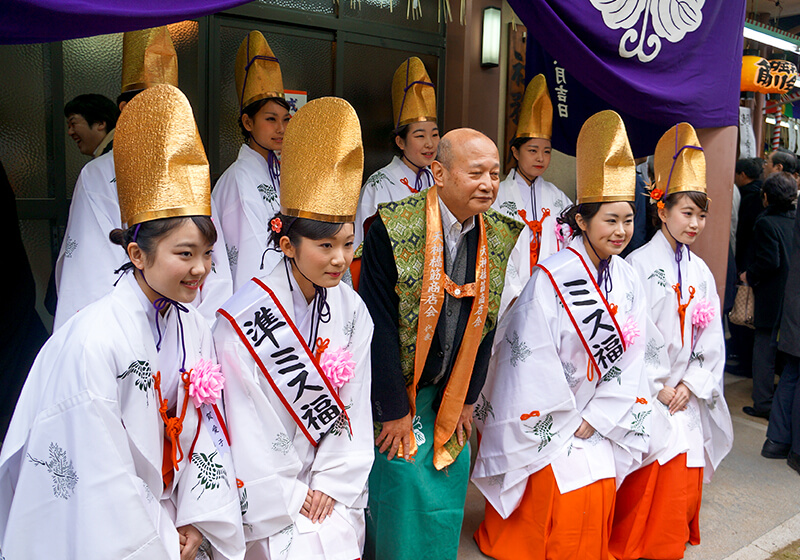
▲Fukumusume in ceremonial attire
Other shrines may not have a parade, but they do select fukumusume to staff the fukusasa sales counters. When you make a purchase, the fukumusume attach charms to your fukusasa branch and shake shrine bells to get the attention of the gods and shower you with good luck.
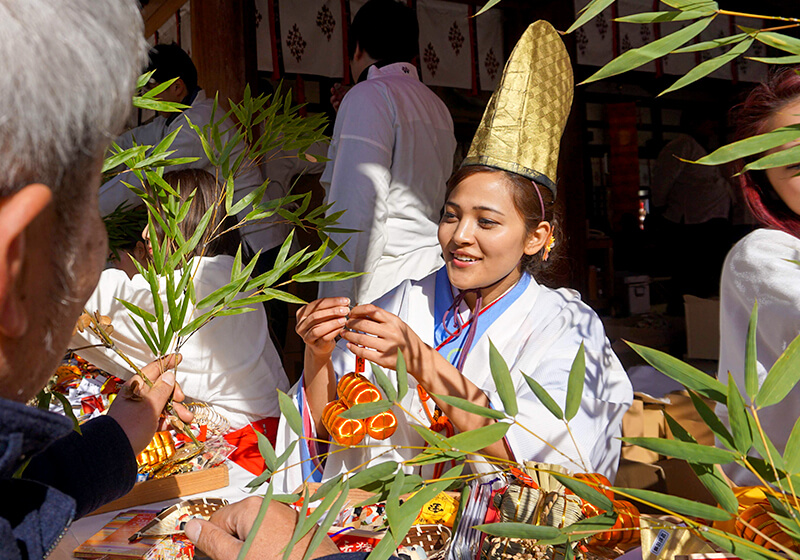
▲Fukumusume attaching good luck charms to a bamboo branch
■How do you celebrate?
You know the saying “you have to spend money to make money,” well that’s definitely the mood at this festival. Whenever you visit a Shinto shrine, it’s custom to pay a greeting to the kami enshrined there. Head to the main worship hall and make a monetary offering before you greet the gods with two bows, two claps, and one bow.
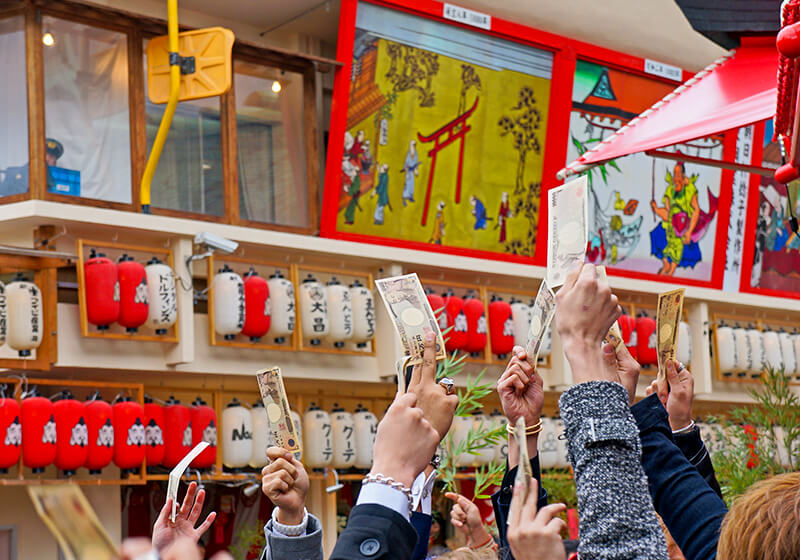
▲Cash offerings can be pretty substantial. Here you see people holding ¥10,000 notes to put in the donation box.
Festival-goers put cash offerings in the saisen-bako, a large box that is often lined in netting to catch stray-donations at the big temples and shrines. Since Ebisu crowds can get pretty sizeable, people throw cash from far back in the crowd, generally aiming for the offertory box. If their aim is off, hopefully the nets will catch it.
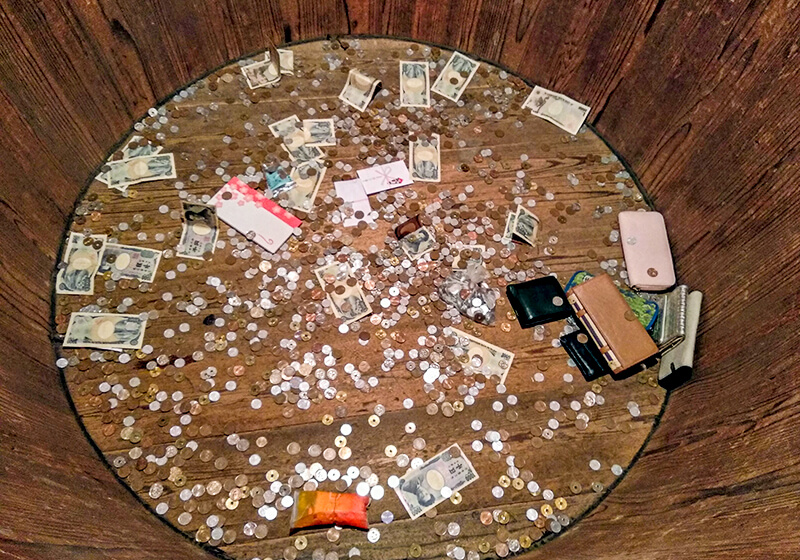
▲The inside of a large barrel for collecting donations at Noda Ebisu Shrine. Some people throw in their whole wallet!
There are usually smaller offertory boxes on the shrine grounds as well.
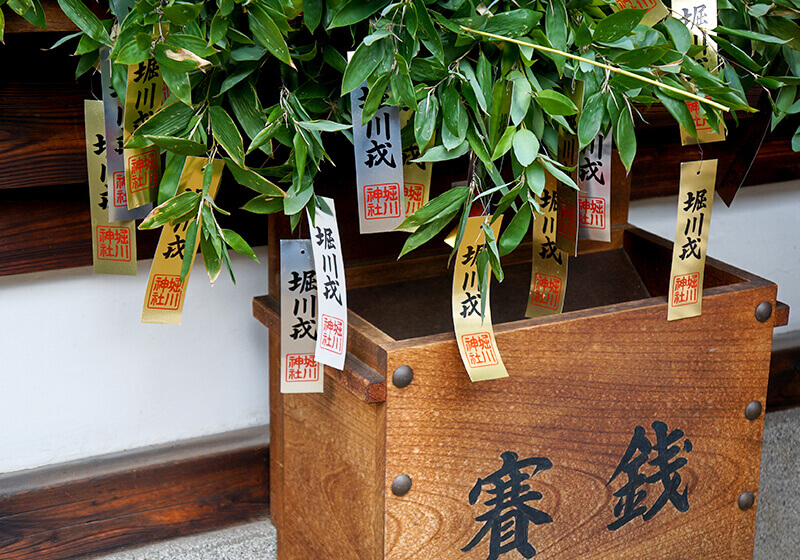
▲Horikawa Ebisu Shrine offertory box
In the past, worshippers would bring their own bamboo branches and only the charms would be attached at the shrine. Thus the phrase “shōbai hanjō de sasa motte koi” which is interpreted two ways; bring a bamboo branch and we will make your business successful (by attaching charms and luck), and if you’re successful in business bring your bamboo branch back next year and replace it with a new one. When you visit an Ebisu festival, you will hear this phrase shouted over the crowds.
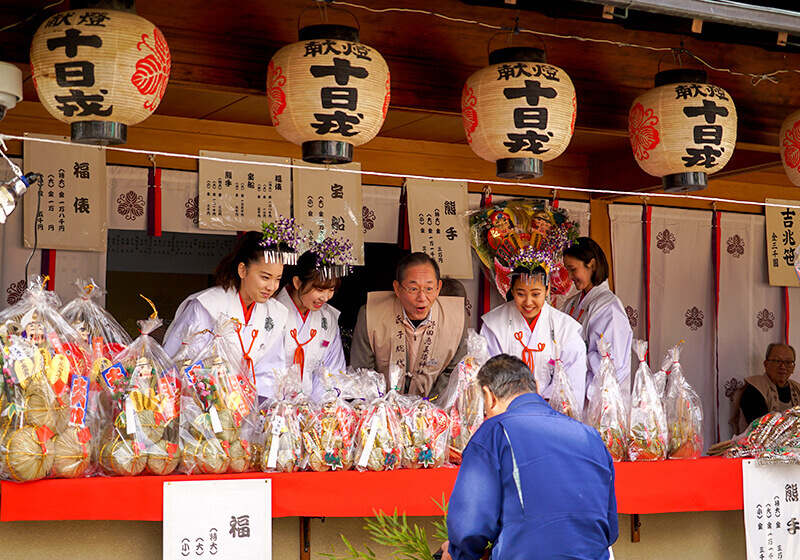
▲Blessings being performed as a festival-goer gets his year’s worth of good luck
Each shrine is a little different, with slightly different traditions. Many shrines have whole fish, tuna or sea breams, offered to the gods in a visible place for worshippers place coins on. Some offer hot sake and the fukusasa could be real or plastic. Imamiya Ebisu has a large drum that visitors pound by hand to get the god’s attention.
■Ebisu shrines in Osaka
Nationwide there are over 3,000 Ebisu shrines. And there a handful of shrines in Osaka that are dedicated to Ebisu and hold Tōka Ebisu festivals.
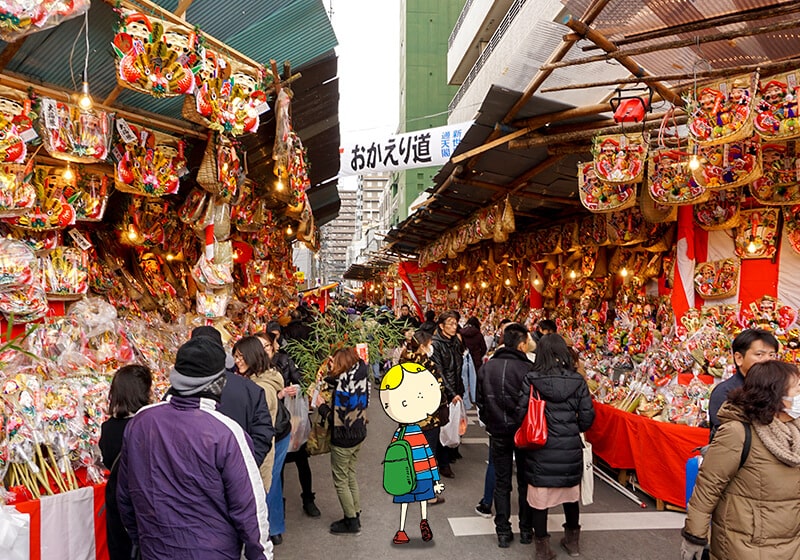
▲Streets near Imamiya Ebisu Shrine lined with stands selling festival decorations
The most well-known and best attended is Imamiya Ebisu Shrine, located in the southern part of the city (Minami). It sees over one million visitors during the 3-day festival. It has an amazing variety of food stalls and souvenir stands lining the streets around the shrine. They’re usually open late into the night so it’s an excellent place to stop for a snack and drink on your way home after a night out.
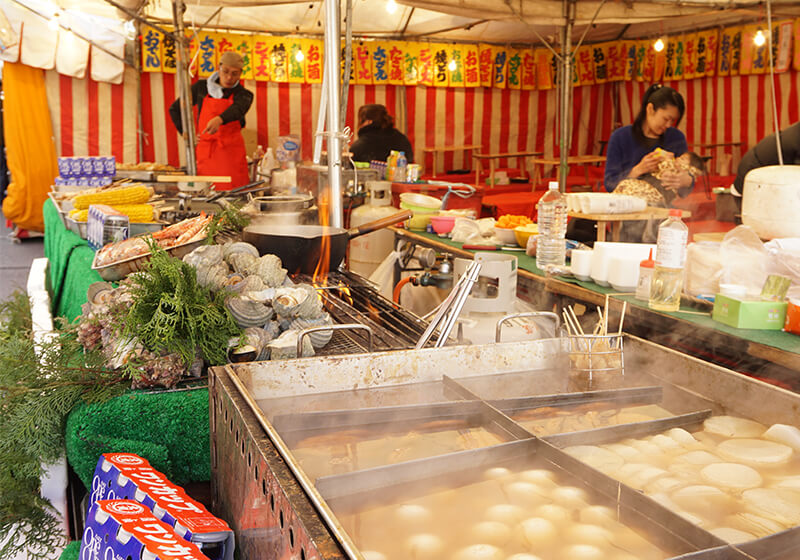
▲Food stands outside Imamiya Ebisu Shrine sell everything from grilled shellfish to hot sake to oden.
Horikawa Ebisu, located in the northern part of the city between Umeda and Tenjinbashisuji Shopping Street, is another fun place to enjoy the festivities. If you go early in the day, the crowds are usually manageable, but it does get fairly crowded as the day goes on. For reference, when I went in the evening I waited for about 20 minutes before I could enter the shrine grounds. Outside the shrine, street stalls stretch for blocks so there’s lots of fun to be had with food and games after you’ve secured your fukusasa.
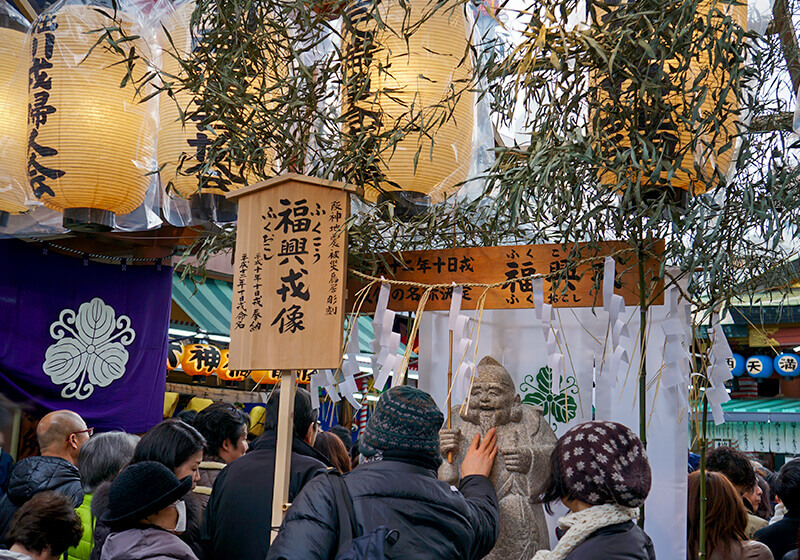
▲Rub the Fukkō Ebisu statue at Horikawa Ebisu for good luck
Also near Tenjinbashisuji Shopping Street, Osaka Tenmangu Shrine (known for its huge summer festival, Tenjinmatsuri) celebrates Tōka Ebisu. It had a long tradition of celebrating prior to 1945 and passed out fukusasa and good luck charms, however it halted celebrations for decades. Finally in 2006, it began its Ebisu traditions again and now you can pop into this major Osaka Shrine for your fukusasa and charms during the festival period.
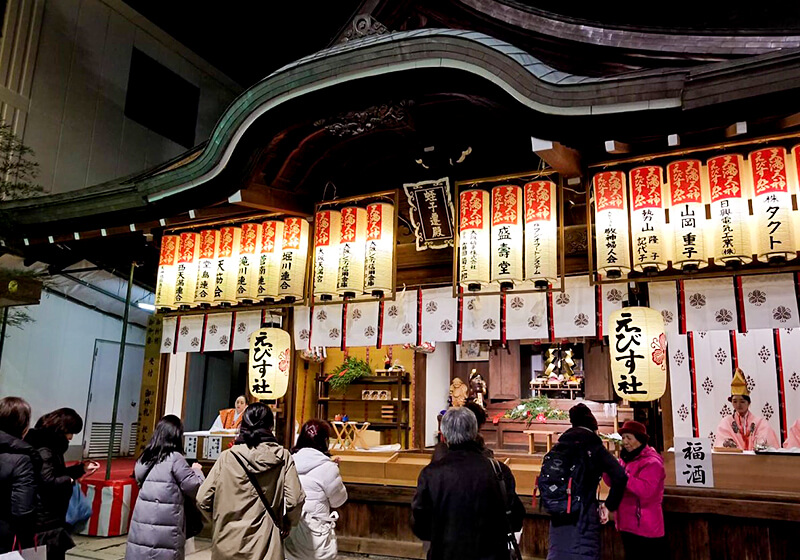
▲This is where you get your fukusasa & good luck charms
A much smaller Ebisu shrine, Noda Ebisu holds a fun, yet low-key Ebisu celebration that’s great for families or people hoping to avoid the big crowds.
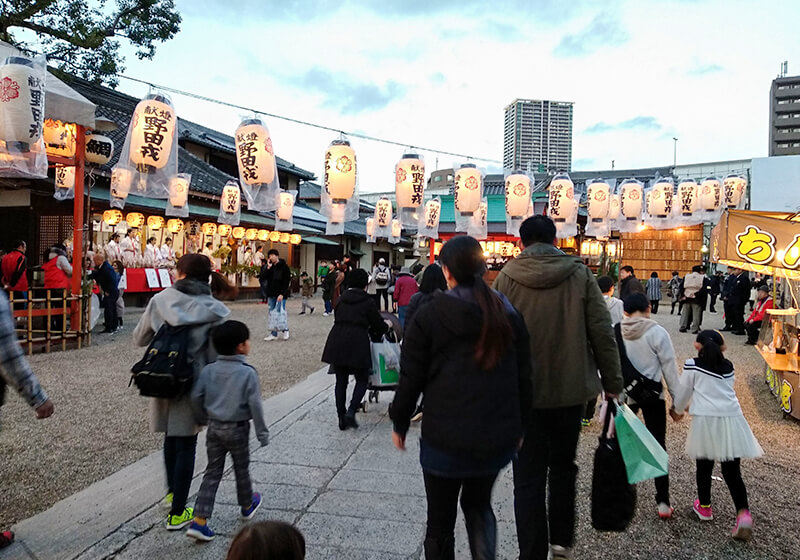
▲Noda Ebisu visitors entering the shrine
There is one street leading up to the shrine entrance that’s lined with game stands and food stalls. The atmosphere is full of laid-back festival fun without being overwhelming.
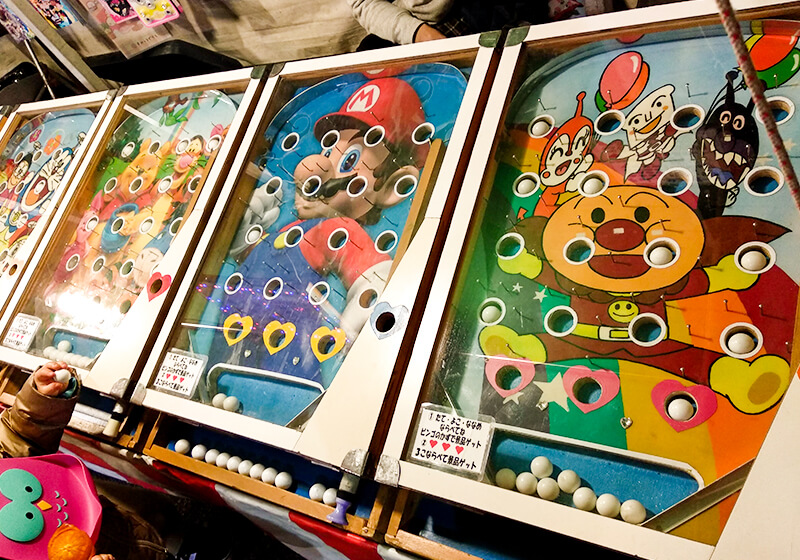
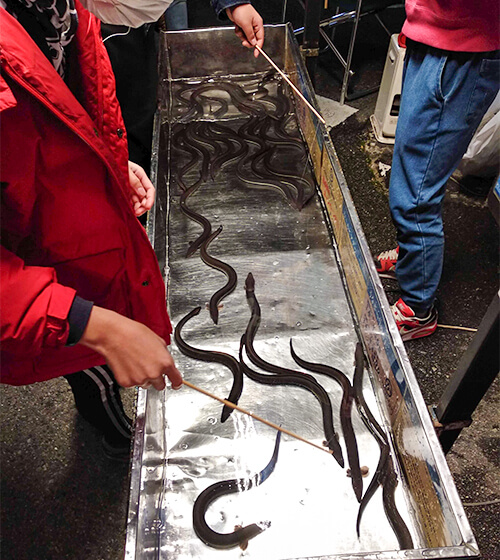
▲Game booths like smart-ball and eel fishing
The food selection is varied, with festival favorites like fried chicken, ebi-sen crackers topped in egg and sauce, french fries, frankfurters, and all manner of sweets.
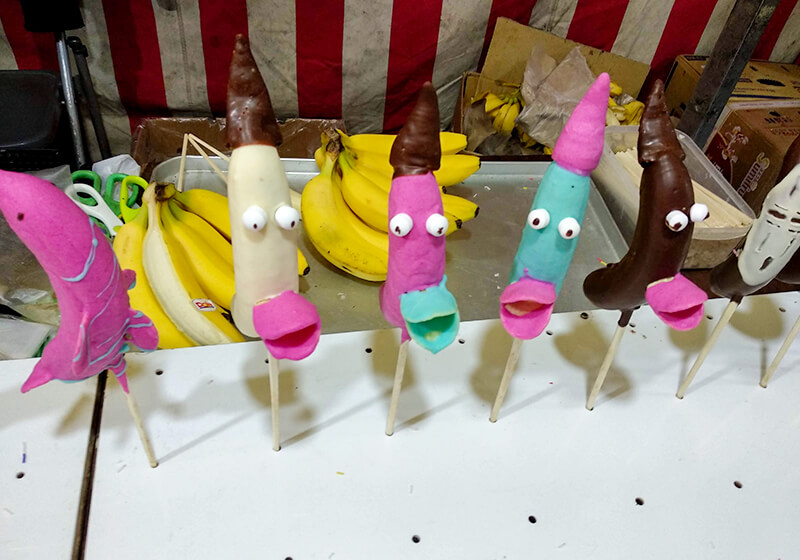
▲Dipped bananas
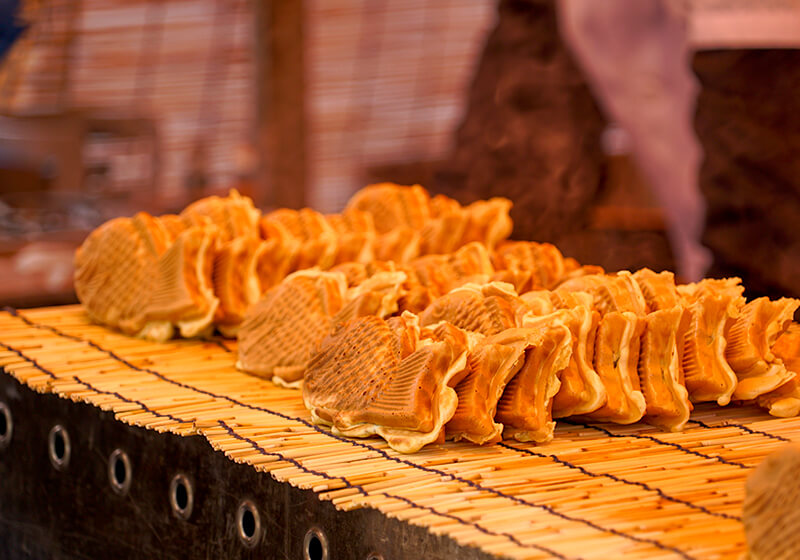
▲Taiyaki (a fish-shaped cake filled with sweet bean paste or custard, considered good luck especially during Toka Ebisu)
Elaborately carved wooden danjiri floats are utterly impressive and on display for visitors to see during the festival. Although they are only paraded through the neighborhood during the shrine’s summer festival, just looking at them is impressive. At night they are pulled out of their warehouses and the air fills with the sound of festival drums. Cups of hot sake, or for kids juice and snacks, are passed out to visitors.
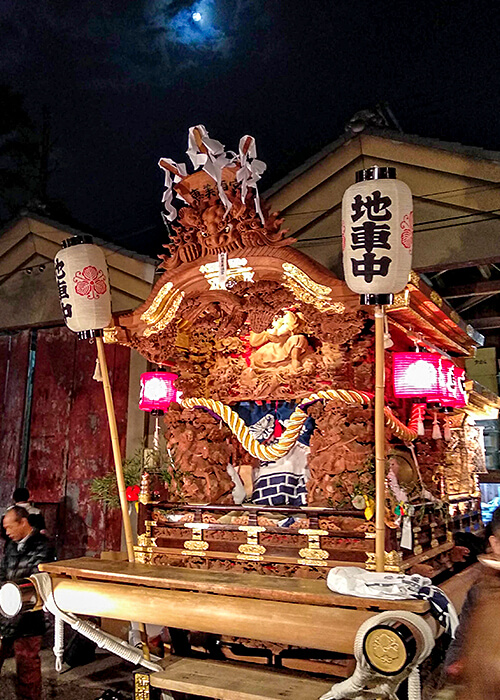
▲Danjiri floats at Noda Ebisu
Hattori Tenjin Shrine in Toyonaka, Osaka Prefecture, holds its own festival called Toyonaka Ebisu. This Tōka Ebisu festival started in 1951 after a nearby Inari Shrine was moved to the Hattori Tenjin shrine grounds. It is well-attended by people living in the northern part of the prefecture and usually sees about 350,000 festival-goers. If you visit, be sure to get one of the popular ¥100,000,000 decorations.
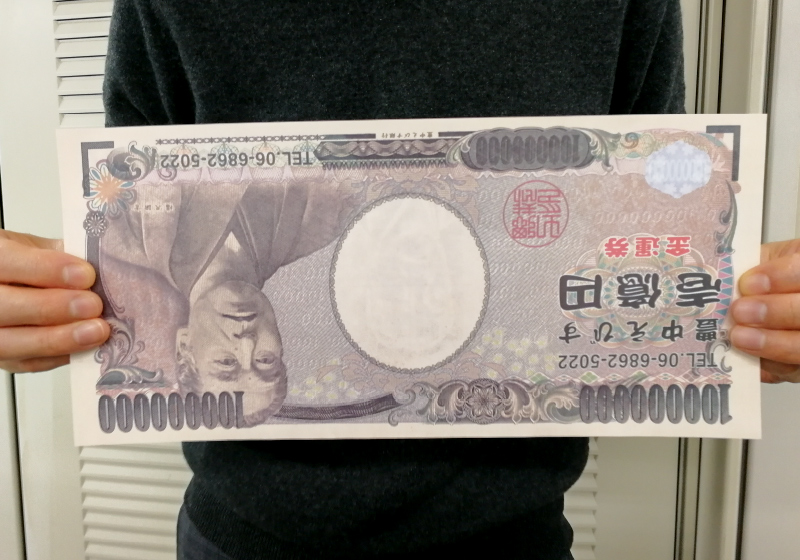
▲Hang your ¥100,000,000 note upside down to represent money falling. This is believed to bring good financial luck.
Miyukimori Tenjingu Shrine, Hoshida Jinja Shrine, and Tamatsukuri Yasaka Jinja Shrine are other shrines in Osaka Prefecture that hold smaller Tōka Ebisu festivals. These are great choices if you’d like to check out the festival traditions in a more relaxed atmosphere.
■Tōka Ebisu during Covid
This festival is huge in Kansai, especially in Osaka. It’s so important to locals that they found a way to make it happen during the pandemic. In 2021, I purchased a fukusasa for delivery from Imamiya Ebisu Shrine so I could stay home and avoid the crowds.
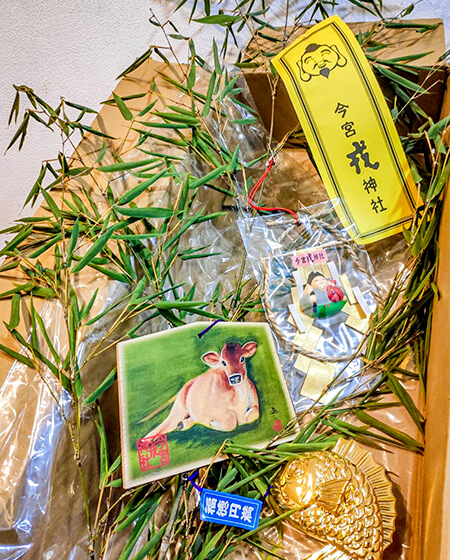
▲Mail order fukusasa
I hope you can take part in this fun early January festival. Wishing you all lots of prosperity this year!
▼If you liked this article, read more
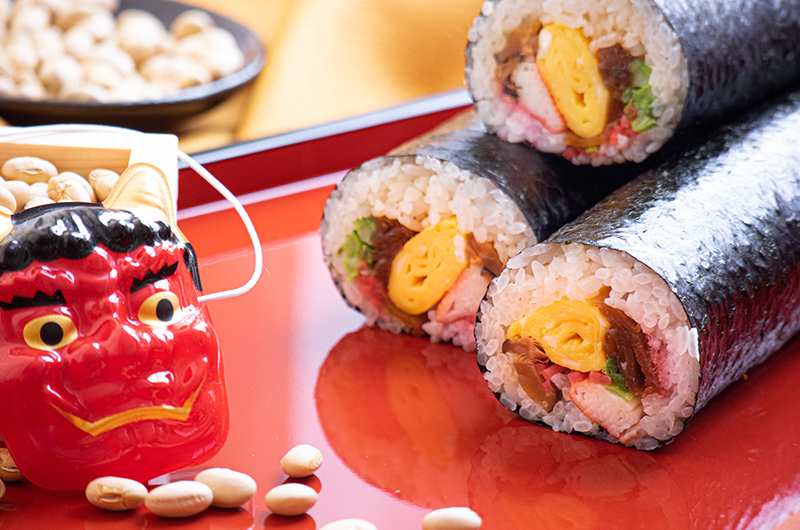 Sushi! And demons! And beans! Oh my! Setsubun
Sushi! And demons! And beans! Oh my! Setsubun 
Supporter
The contents of this page were current at the time it was posted, but may differ from the present.
Text visible in this map is based on information from Map Tiler and may differ from actual geographical names.

